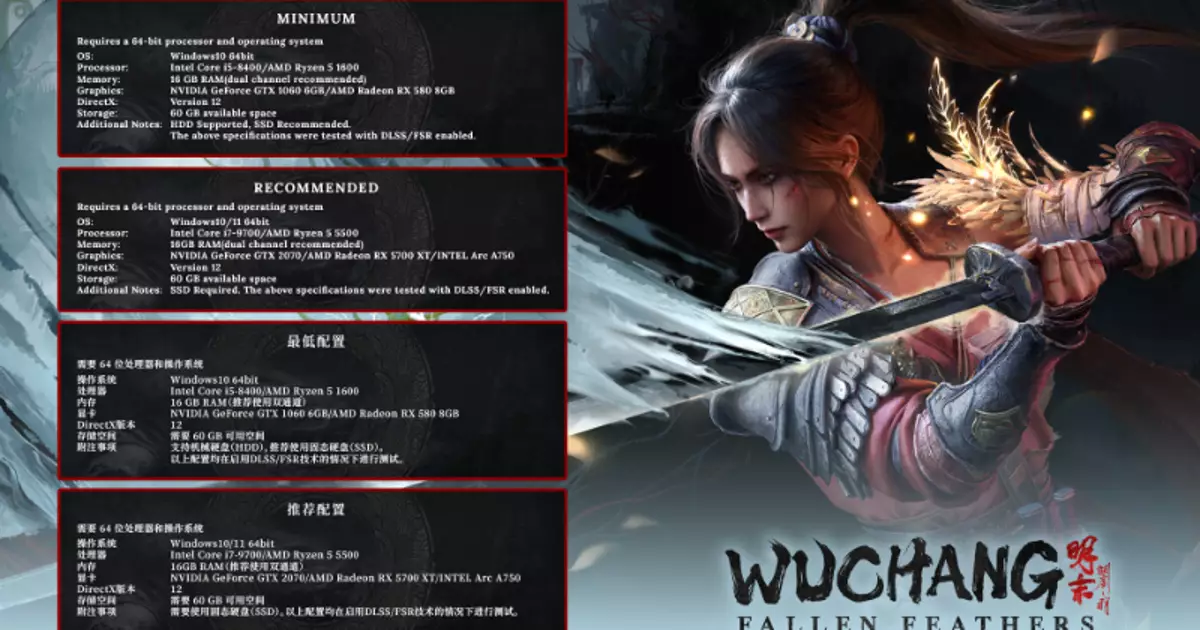Wuchang: Fallen Feathers emerges as an intriguing addition to the landscape of action RPGs, bringing a fresh perspective rooted in Chinese mythology and history. Unlike the typical medieval European fantasy, this game plunges players into a vividly reimagined Ming Dynasty with a supernatural twist. The hero, a swordswoman with amnesia, navigates a richly textured world plagued by a strange feathering disease—a metaphor that resonates beyond its fantasy veneer, hinting at themes of identity, transformation, and decay.
What sets Wuchang apart is its audacious art direction and gameplay mechanics that combine traditional wuxia elements with grotesque, mutant-infested chaos. Instead of a sanitized fantasy realm, players are thrust into a gritty, haunting environment where monstrous plagues distort both the land and its inhabitants. This breathes new life into the action RPG genre, emphasizing visceral combat, strategic upgrades, and narrative choices that shape multiple endings. It’s a game that dares to be ambitious, blending mythic storytelling with brutal, dynamic combat.
System Requirements: Surprisingly Accessible for a Visual Powerhouse
One of the most striking aspects of Wuchang’s reveal is its surprisingly modest system prerequisites, considering its intense visual aspirations. The minimum specs—an Intel Core i5-8400, GTX 1060, and 16GB of RAM—make the game accessible to a broad audience without requiring flagship hardware. A 60GB SSD is recommended to ensure smooth, fast-paced action, but even HDDs are supported—an encouraging note for players who may not own high-end rigs.
However, the recommended specs push the visual fidelity further. Here, the game calls for a more potent processor like the Intel Core i7-9700 and an RTX 2070 or similar, harnessing the power of DLSS 4 technology for optimal performance and eye-catching graphics. This hints at Wuchang’s potential for stunning visual effects, fluid animations, and detailed environments. Yet, the fact that the game’s core experience can run on older hardware is a commendable move toward inclusivity, allowing more gamers to explore its dark, mystic world without breaking the bank.
Gameplay Mechanics and Narrative Depth
At its heart, Wuchang is more than just a visually striking action game; it’s a complex narrative journey. The protagonist, a pirate swordswoman with amnesia, must unravel her past amidst the chaos of a dying land where people are transforming into feathered monstrosities. This setup offers a compelling mix of detective work and brutal combat, as players utilize “Red Mercury,” a mysterious resource, to unlock powerful techniques and enchant weapons—elements that promise depth and strategic flexibility.
The game’s emphasis on player choice and consequence elevates it beyond typical hack-and-slash titles. Every decision—who to trust, which secrets to pursue—affects the story’s outcome, culminating in multiple endings. These narrative branches add a layer of replayability that appeals to gamers craving depth and meaningful engagement. Additionally, the game’s design suggests a combat system that rewards skillful timing, weapon customization, and tactical thinking—traits that resonate with fans of challenging, rewarding gameplay.
Visual Evolution and Artistic Identity
Since its last coverage in 2021, developer Leenzee has refined Wuchang’s aesthetics, aiming to differentiate it further from Bloodborne and similar dark fantasy titles. The update improved the visual palette, reducing the overly red tones associated with Yharnam, and embracing a more balanced, atmospheric look. This enhances immersion, drawing players into a haunting, mythic world alive with detail and menace.
The game’s creature design and environmental art reflect a careful blend of folklore and dystopian fantasy. No longer a realm populated by jovial shopkeepers or comic relief mutants, Shu is now a gritty, disturbing tableau where every feathered enemy feels like a real threat. This evolution demonstrates a conscious effort to craft a distinct visual identity that stands apart from its inspirations, reinforcing its thematic focus on transformation and decay.
The Power of Ambition and Cultural Fusion
Wuchang’s ambition to fuse Chinese mythology with intense action gameplay is a bold step forward for the genre. It challenges the often Eurocentric focus of Western-developed RPGs, showcasing a setting rich with cultural and historical nuances. By doing so, it broadens players’ horizons and invites them into a mythic China filled with supernatural dangers and moral puzzles.
While some may argue that the game’s similarities to Bloodborne and other soulslike titles could dilute its originality, its cultural framing and narrative focus give it a fresh heartbeat. It’s a statement that action RPGs can be more than just variations on a theme—they can be vessels for exploring diverse mythologies while delivering satisfying gameplay. For fans tired of predictable medieval settings, Wuchang might offer a breath of fresh air—and an immersive journey into forbidden knowledge, ancient curses, and the resilience of the human (and avian) spirit.

